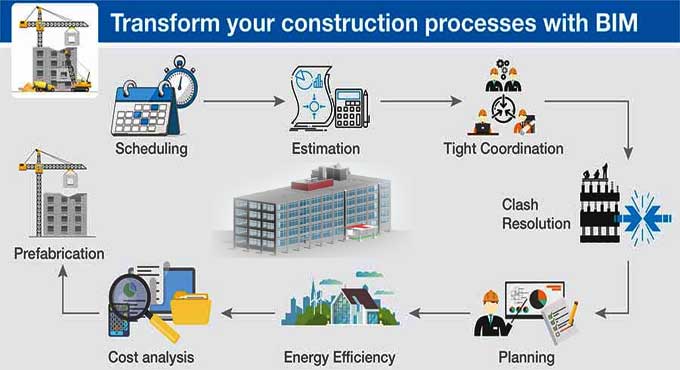Building Information Modeling: 7 ways to control Project Costs
Tweet
Civil engineers in construction are constantly looking for ways to improve everything from construction methods to materials to creating new building designs that require lower margins and thin financing costs. Contractors and designers are under pressure to find more effective ways to reduce construction costs in those circumstances.
An increasing number of engineers, architects, and contractors are using BIM to design and develop structures faster, better, and more efficiently. The benefits of BIM are seen across the entire project lifecycle, from project design to facility management.
Key Steps to Reduce Construction Project Cost using BIM
Cost & Time
BIM helps to plan projects based on factors such as cost and labor. During the project life cycle, time and cost are essential factors.
The potential for cost and time savings is one of the main reasons organizations adopt BIM. As a result of BIM, both of these elements of the project can be reduced & improves the project lifecycle.
The use of BIM not only enhances collaboration and unleashes creativity but also saves time and reduces project costs. Furthermore, it assists the construction company in discovering unexpected expenses and managing unplanned time constraints.
Prefabrication Enhancement
Information can be stored and accessed easily with BIM. As a result, the construction company is able to save money through innovative methods. In the case of offsite manufacturing, this information can be used to generate detailed drawings. Structures can be designed, detailed, and built with BIM in an offsite controlled environment, which increases efficiency and reduces waste, labor, and material costs.
Cost Estimating Model
Using BIM early in the planning process can result in a more accurate estimate of construction costs. In addition to automating the application and calculation of costs, BIM allows organizations to consider other value factors, such as identifying and managing risks.
While using BIM models, it is possible to estimate resources and materials more accurately. The right materials can then be procured precisely at the right time & quantity. The finance costs are also affected, as funds must only be committed when needed the most.
Collaboration Improvement
When projects are not collaborative, time delays and costs increase beyond what was initially estimated. The use of BIM enhances collaboration on any construction projects.
BIM's integrated nature increases efficiency within the engineering team & opens up new communication channels, making it easier for team members to work with others on the project. Team members can collaborate on a common platform using BIM. Implementing BIM for effective outcomes depends on effective communication and collaboration.
Effective BIM Design
When BIM is used during the design phase, errors & redesign costs can be reduced. All associated drawings will reflect changes made to the central model of a project. Organizations can reduce errors by identifying and resolving possible issues and conflicts during the design phase.
As a result, structures can be built without the need to redo things and the costs associated with late cycle changes are eliminated. As part of BIM frameworks, designers can also monitor the impact of any design changes instantly & incorporate them into the building plan for their implementation.
Safety
In addition to assessing safety and visual risk, BIM also contributes to the lifecycle of a project. Various construction workplaces that are safer & more productive. A safe workplace will also reduce the likelihood of accidents and delays on the construction site. As a result, the organization can visualize and plan onsite activities more effectively, which mitigates physical risks.
Clash Detection
A BIM system allows teams to coordinate more effectively and detect clashes before they begin any construction process. By detecting clashes automatically, BIM helps to avoid such conflicts. The construction phase is thus made easier by reducing the amount of rework.
To get online demonstration, watch the following video tutorial.
Video Source: Microdesk
It is possible to plan it right before construction begins on-site with BIM.
The process can also help to prevent last minute changes and any unexpected problems. Costs associated with rework include time and effort.

Gallery
Feel free to contact us for BIM requirements. One of our representative will respond you within 24 Hours. Send us your projects requirement today and grow your project.
Explore More !







